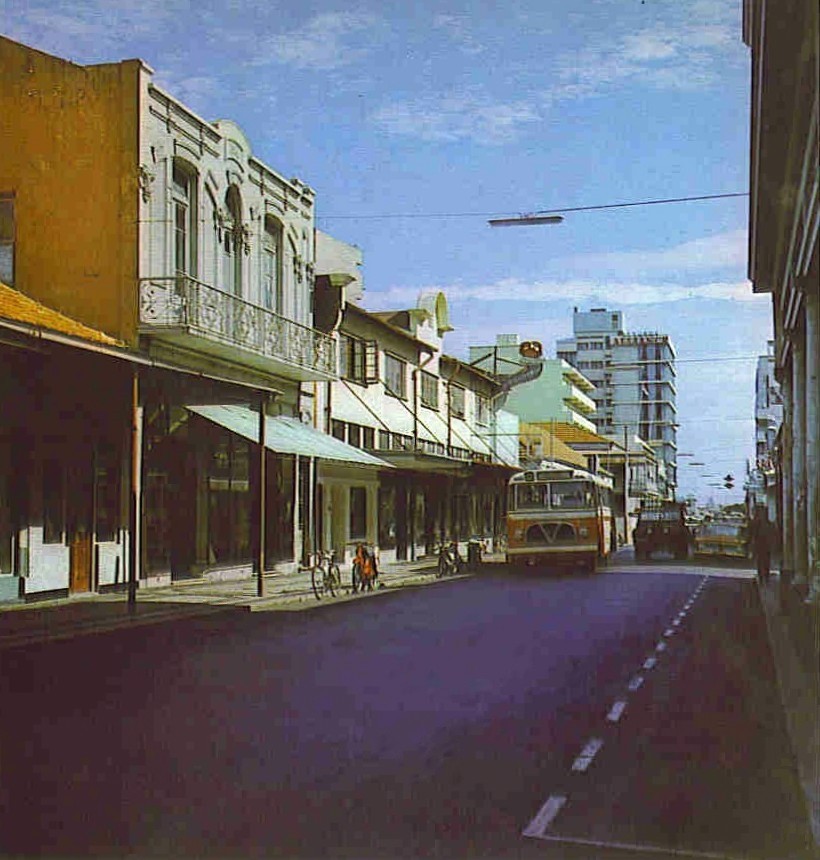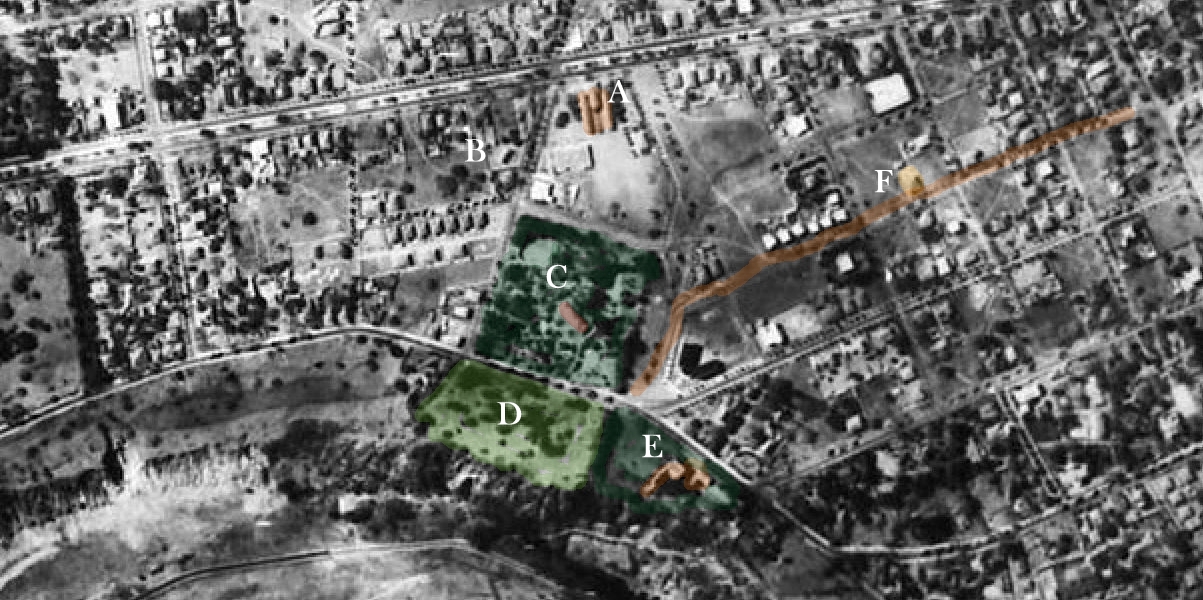Até eu ter ido viver para os Estados Unidos após sair de Moçambique em 1975 (e não poder voltar) e rapidamente me ter convencido que Portugal, para onde tinha ido estudar, com a sua miséria perene e agora as fantasias do socialismo, nunca ofereceria as condições para reunir a família (tinha razão. 50 anos depois do 1974, Portugal permanece na cauda da Europa em termos de nível de vida), o único judeu que conheci era o Senhor Stanley Rygor, sobre quem só sabia que tinha uma lojinha na velha Baixa de Lourenço Marques.
Ele ia às piscinas ver as provas de natação e quem o conhecia era a minha irmã Cló, na altura reconhecida como campeã nacional de natação (era comum, quando me apresentava a alguém, dizer que ou era irmão da Cló ou filho do Sr. Comandante Botelho de Melo).
Foi a Cló que o conheceu primeiro, quando um dia foi à loja do Sr. Rygor na Rua Consiglieri Pedroso para emoldurar um poster do lendário nadador norte-americano (e judeu) Mark Spitz, que faria história nos jogos olímpicos de Munique no verão 1972 – interrompidos por (mais) um inenarrável ataque terrorista de palestinianos na vila olímpica e o subsequente massacre de vários atletas e dirigentes da delegação israelita.
Algum tempo mais tarde ela apresentou-me o Sr. Rygor, sem eu saber nada sobre a sua religião. Só muito mais tarde é que soube, mais como curiosidade. Eu na altura nada sabia sobre o judaísmo, o Holocausto perpetrado pelos Nazis durante a II Guerra Mundial, os séculos e séculos de perseguição, principalmente na Europa. Apenas tinha a noção, transmitida muito en passant nas aulas de catequese na Rebelo da Silva e na Igreja de Santo António da Polana (pois….) que Jesus Cristo fora judeu e depois aquela confusão toda com os romanos há dois mil anos. Os padres vagamente rosnavam que não eram de confiança e as mensagens subliminares dos filmes de Hollywood (como o Barrabás, que vi no Varietá) escapavam-me.
Ele, era simpático, alto, culto, com um bigodinho fino e tinha um sotaque esquisito, dando um ar de estrangeiro.
Lourenço Marques, e penso que uma boa parte de Moçambique, era – parecia então -um rico mosaico de diversidade cultural, étnica e religiosa e, apesar de eu não ser religioso, eu tinha noção de ali conviverem pessoas das mais diversas origens e persuasões. De cabeça, lembro-me de, para além dos católicos, de existirem várias denominações cristãs protestantes, muçulmanos (agora sei que sunnis), os ismaelitas, os hindús, ortodoxos gregos e as Testemunhas de Jeová.
E depois havia o Stanley Rygor.
Por um dos álbuns do Santos Rufino, que tinha comprado em 1972 por 10 escudos na loja do Monhé Branco junto à Praça Mac-Mahon, descobri por uma fotografia que em 1927 havia uma pequena sinagoga em Lourenço Marques mas só em 1998, quando, circunstancialente “regressei a casa” e fui trabalhar por uns anos em Maputo, é que descobri que o edifício ainda existia (mais ou menos abandonado então) que ficava recatado num terreno entre a Pastelaria Cristal e o antigo Liceu Salazar, na antiga Rua General Botha.
Entretanto em Setembro de 1974 veio a Frelimo com a sua limpeza étnica encapotada e credo revolucionário comunista, ainda por cima raivosa por aquilo do 7 de Setembro e quase todos os habitantes de Lourenço Marques simplesmente fizeram as malas e saíram de Moçambique, prenunciando os 50 anos que entretanto passaram e que basicamente têm sido uma longa, infindável, e quase impenitente desgraça. Anos mais tarde, alguém disse a alguém que disse a alguém (na altura não havia internet nem redes sociais, as pessoas simplesmente desapareciam da Cidade e levava anos a perceber o que lhes tinha acontecido) que me disse que o Stanley Rygor fechara a loja e tinha ido com uma irmã para a antiga Rodésia. Imagino que já tenha falecido mas não sei nada sobre o que lhe aconteceu.
Mas hoje temos a internet, com todos os seus defeitos e oportunidades.
E o que fui descobrindo é interessante.
Stanley era filho de Louis e Marie Rygor e tinha um irmão – Harry – e duas irmãs – Esther (ou Gertie) e Rosie. Todos os irmãos nasceram em Lourenço Marques.
Os pais, Louis e Marie Rygor, vieram da cidade de Odessa, ao Sul do que hoje é a Ucrânia, que conheço melhor desde que Putin anda entretido a desmantelar e a matar gente ali, mas que no tempo em que lá viveram ainda fazia parte do império russo, e onde havia uma expressiva comunidade judaica. Um texto refere que eles haviam “fugido” de Odessa no ano de 1905.
Curiosamente, na altura o cônsul do Império da Rússia em Lourenço Marques (e da Áustria-Hungria, e da China imperial) era um alemão genial, Fritz Wirth – o Wirth da Breyner & Wirth, que tinha vários negócios, alguns com Francisco de Mello Breyner.
Por alguma razão, em 1913, um ano antes do início da I Guerra Mundial, o casal Rygor, que entretanto passara alguns anos no Reino Unido, acabou por se radicar na pindérica Lourenço Marques, onde havia de facto uma pequena mas muito influente comunidade empresarial judaica. E abriram na Rua Consiglieri Pedroso uma lojinha de emoldurar quadros e vender vidros, etc. Louis dizia nos seus anúncios que era o único em toda a província. Esta era uma das três principais ruas de comércio da pequena cidade, sendo as outras a fundacional Rua Araújo e a então relativamente recente Avenida da República (hoje 25 de Setembro). Claro que havia ainda a Rua da Gávea, o bairro “indiano”, diz-se que povoado com gente de Diu, muçulmanos, com a sua Mesquita na esquina, onde iam rezar cinco vezes ao dia.


O casal Rygor viveria em Lourenço Marques o resto da sua vida. Marie Rygor faleceria em 22 de Julho de 1935 com 64 anos de idade e Louis em 17 de Dezembro de 1948 com 74 anos de idade.
Ambos foram sepultados no talhão judaico junto do Cemitério de São Francisco Xavier, a caminho do Alto-Maé, onde ainda hoje se podem ver as suas lápides.
Dando sequência a uma aspiração da pequena comunidade judaica da cidade, em 23 de Agosto de 1926 foi inaugurada a sua (até hoje) única sinagoga. Na comissão constituída para o efeito, que incluia Ernest Salm (da Jacques Salm & co.) como presidente, Jules H. Muller, J. Barnett, C. Mosiff, Glazer e Joseph Levy, Louis Rygor era o Tesoureiro (nota: a lista apresentada aqui difere).

Segundo vários relatos, entre os quais este, a comunidade judaica de Lourenço Marques organizou-se mais ou menos por acaso, quando, no início da II Guerra Anglo Boer (11 de Outubro de 1899), o Presidente do Transvaal, Paul Kruger, subitamente expulsou do seu território o Rabbi Joseph Herman Hertz, que acusava de ser pró-britânico e que saiu do Transvaal pela linha ferroviária entre Pretória e Lourenço Marques, onde ele passou uns dias antes de apanhar um barco para Durban, sob controlo britânico. Nessa curta estadia, Hertz, que era obviamente firme, voluntarioso e uma força da natureza, pediu a Leon Cohen, um empresário e figura de topo na pequena urbe, que organizasse uma reunião na segunda-feira, dia 18 de Dezembro de 1899, com os fiéis locais, onde estabeleceu três prioridades: 1) criar-se um cemitério judaico na Cidade; 2) formalizar uma comunidade organizada; e 3) criar um sub-comité para coordenar actividades com o Comité de Vigilância Judaica de Johannesburgo e a Sociedade Judaica para a Protecção de Mulheres e Raparigas de Londres.
Cerca de vinte anos mais tarde, em 1921, os judeus locais formaram uma organização chamada Associação de Benevolência Israelita Honen Dalim (que quer dizer “ajudar os pobres”), que organizou o esforço para comprar um terreno (na Rua General Botha, adquirido à Delagoa Bay Lands Syndicate, uma das Delagoa Bays que eram quase donas daquilo tudo) e ali construir uma sinagoga, que seria consagrada pelo Rabbi Chefe Prof. Doutor J. L. Landau, que veio expressamente de Johannesburgo. Formalmente, a sinagoga de (hoje) Maputo chama-se Sinagoga Honen Dalim.
Segundo um artigo interessantíssimo de Hyman Jocum, que reproduzo na íntegra mais abaixo, em que ele entrevistou ambos Stanley Rygor e a sua irmã Gertie no início de 1976, quando ainda estavam em Moçambique, já independente, a altura em que estiveram mais judeus em Lourenço Marques foi em 1942, no pico da II Guerra Mundial, Hitler em pleno e a matar judeus a uma escala industrial, sendo a maioria refugiados em “trânsito” (ou seja tecnicamente nem podiam ficar porque Salazar não deixava, nem podiam ir para lado nenhum porque praticamente ninguém os aceitava). Após o fim da guerra, segundo a entrevista, a maior parte destes rumou o Brasil e a Alemanha Ocidental. Imagino que alguns acabaram também em Israel e…ficaram em Moçambique.
Penso que após a morte do pai em 1948, Stanley passou a tomar conta da loja de vidros e molduras na Rua Consiglieri Pedroso.
Numa crónica, o já falecido João de Sousa recorda quando Stanley foi seccionista do Clube Ferroviário de Lourenço Marques, pelo hóquei em patins, numa altura em que o hóquei em patins da Cidade se revelou ser o melhor do…mundo, a partir dessa altura. No seu magnífico blog, o inigualável e também já falecido Francisco Velasco, uma peça-chave do milagre do mundial “moçambicano” no hóquei em patins, fez uma “lista de pessoas VIP” que ajudaram no processo de criar uma equipa campeã do Mundo. Stanley Rygor é mencionado, como seccionista. (ele também menciona o meu Pai, o que é simpático mas não percebo).
Com a chegada da Frelimo a Lourenço Marques no final de 1974, pelos vistos quase todos os judeus de Lourenço Marques se juntaram à Debandada Geral, pois percebia-se claramente que iriam destruir a economia e passar Moçambique duma ditadura colonial de partido único para uma ditadura comunista belicista e de partido único. Na peça em baixo, escrita no início de 1976, já só se fazia referência a Stanley (que agia como chefe oficioso da comunidade judaica local) e à sua irmã Gertie e a mais um ou dois residindo na agora nova capital do nascente país.
Entrevista de Hyman Jocum a Stanley Rygor e Gertie Rygor, 1976
Neste artigo que é essencialmente uma entrevista, para além da descrição de Lourenço Marques em 1942, e de outras informações, é deveras interessante a referência à proveniência e o percurso dum Sidur (um livro de rezas) durante a II Guerra Mundial, que fora parar a Lourenço Marques. O documento, que era duma menina com 10 anos de idade, foi contrabandeado pelo pai da menina, de Varsóvia, na Polónia, onde viviam, para a cidade russa de Vladivostock, no Extremo Oriente, via o comboio transiberiano, de onde seguiu para Shangai, onde se lhe juntou a mulher, que foi de seguida com ele para Macau. A menina ficou atrás. Em Macau, apanharam um barco que rumou a Lourenço Marques – em “trânsito”. Entretanto, poucos dias antes de a Alemanha nazi invadir a União Soviética, em 22 de Junho de 1941(um domingo), a Cruz Vermelha Internacional conseguiu resgatar de Varsóvia a filha do casal, que conseguiu fazer chegar a Lourenço Marques. As autoridades da África do Sul permitiram que ela frequentasse uma escola local até ao fim da guerra. Os pais ficaram em Lourenço Marques. Aparentemente, depois foram por uns anos para Shangai e, em 1949, quando os exércitos comunistas de Mao tomaram aquela metrópole chinesa, mudaram-se para a então nova nação de Israel, que havia declarado a sua independência em 14 de Maio de 1948.




















